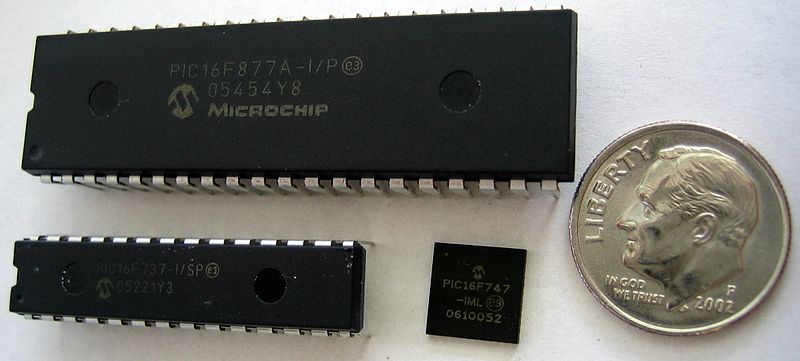Digital electronics was a secret interest of mine I wanted to go back and learn about programable chips and what I could do to incorporate them into some gadget ideas.
EPROM's (erasable programmable read only memory) chips are memory chip that retains its data when its supply is switch is off. Meaning it is non volatile. It is an array of floating gate transistor individually programmed by an electronic device that supplies higher voltages than those normally used in Digital circuits.
A programmed EPROM retains its data for a minimum of ten to twenty years, with many still retaining data after 35 or more years, and can be read an unlimited number of times. The erasing window must be kept covered with an opaque label to prevent accidental erasure by the UV found in sunlight or camera flashes. Old PC BIOS chips were often EPROMs, and the erasing window was often covered with an adhesive label containing the BIOS publisher's name, the BIOS revision, and a copyright notice. Often this label was foil-backed to ensure its opacity to UV.
Flash forward a few years and you have PIC Programable Interface controller. They are a family of modified Harvard architecture micro-controllers made by microchip technology.
PICs are popular with both industrial developers and hobbyist alike. they are widely available have a extensive collection of application notes, and are relatively cheap. The original PIC was built to be used with General instrument's new 16 bit Central Processing Unit. The PIC used simple microcode stored in a Read only Memory to perform tasks,
Devices called programmers are used to get program cod into the target PICs. There are many programmers for PIC micro-controllers ranging from the simple design of in circuit design programming, which allows direct downloading of code from host computer. Or complex programmers that can sense the device at several voltages., many of which have been preprograms themselves.
I often seen these devices in the back of electronics magazines for making circuits such as voice synthesizer, universal Infrared Reader. or counter / timer. Much of the projects I didn't have much interest in. They also were basically chips that need a circuit to be built for them. I much prefer the kit form projects as I didn't want to order a shopping list of items but rather have the whole project sent to me so I could construct it my self. Next comes the Arduino it is a popular open source single board microcomputer, descendant of the open source wiring platform. It is designed to make the process of using electronics in a multidisciplinary projects more accessible.
The Arduino project is a fork of the open-source Wiring Platform. Colombian artist and programmer Hernando Barragán created Wiring as a master's thesis at the Interaction Design Institute Ivrea under the supervision of Massimo Banzi and Casey Reas. Wiring was based on Processing and its integrated development environment which had been created by Casey Reas and Ben Fry.
For me Arduinos are a great way to start at entry level programing from simple projects to more complex ones. There are many project you can start with like a EMF detector for ghostly apparitions. I like the wireless applications for possible bluetooth connections for you Iphone or computer control. I am still reading up on these fascinating projects and wondering about copying a circuit for my next electronics project. Until then why not look into the wonderful world of the Arduino micro computer.





No comments:
Post a Comment